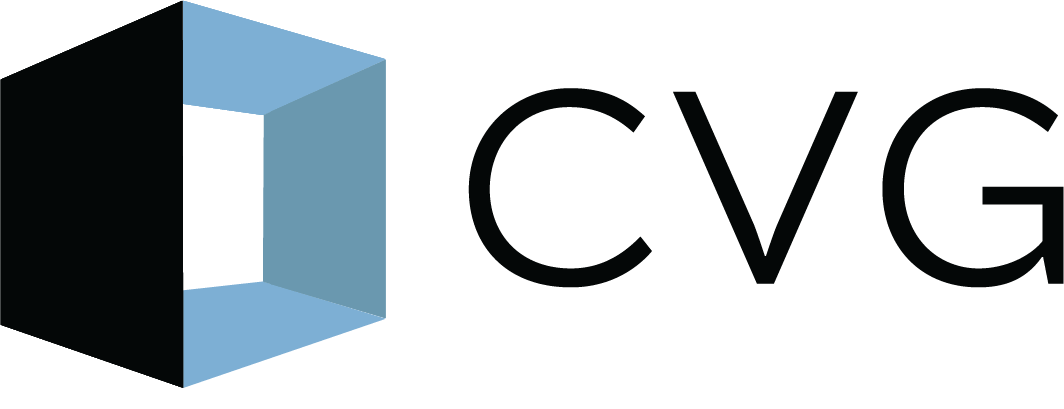Growth does not mean more of the same. Here’s why that matters for small firm architects.
By Emily Hall, CVG
At CVG, our business development efforts include identifying small architecture firm owners and asking them if they’d like help growing their firm.
One of the most common responses we receive is “No thanks, I don’t want to grow.” This is often followed by “I’m so busy right now, I can’t even manage my current workload or my small staff.”
A typical misunderstanding is that growth means MORE OF THE SAME. Understandably, an overworked firm leader would think we’re proposing adding more to his or her plate. More headache. More staff to manage. More clients to keep happy. Who would want that? It’s not why you went to design school.
But sustainable growth can feel very different. It’s the difference between getting in over your head because you’ve reacted too quickly to the marketplace, and planning strategically so that you have the right pieces in place to achieve your business goals.
Sidenote: It is important to emphasize that your list of business goals should prominently feature generating profit. Profit can be taken home by principals as financial gain, distributed to employees as raises, bonuses, or improved benefits, reinvested to improve firm operations (such as technology), or even donated to charity. At its most basic level, profit provides the means for your doors to stay open -- and it gives you the cushion to pursue projects you enjoy.
By examining three facets of sustainable growth, we hope to alter the misconception that growth begets chaos.
1. Growing profit.
It is important to differentiate between profit and revenue. Whereas revenue includes all billings earned as design fees, profit is what remains after all firm expenses are deducted. A healthy architecture firm should aim for 15 - 20% profit at the end of the year.
CVG often observes a pattern that when revenues go up, so do expenses...and profit remains flat and/or the same as the year prior. This condition would frustrate any firm principal; you are working harder with no tangible gain.
Growing profits simply means widening the gap between expenses and revenues. On the “lowering expenses” side, firms can curb unnecessary expenditures and improve operational efficiency. On the “increasing revenue” side, firms can develop effective marketing and business development strategies that bring in better projects, while also pricing their work more accurately so that fees are better aligned with actual hours spent.
2. Growing staff size.
This gives most small architecture firm leaders pause. First, it means more staff to manage. Second, it requires consistently bringing in new work. Third, it introduces the mental burden of being responsible for more people’s livelihoods.
However, investing in the right hire(s) at the right time(s) can dramatically transform your firm for the better. Imagine a distribution of labor where all staff members are performing tasks suited to their skill level and pay grade. Principals aren’t bookkeeping. Project architects aren’t picking up redlines. Drafters aren’t running firm errands.
We know this is what makes small architecture firms special: everyone wears many hats. But, as you consider incremental growth, you’ll see the many other things that make your firm culture special. Morale improves when everyone is functioning at their highest and best use.
Additionally, structuring a slightly larger firm makes you less disrupted by outside events, such as a stalled project or an employee’s unexpected decision to take another job. Firms under five people tend to scramble when these events occur, whereas a firm with more available resources is inherently more stable.
A few hiring rules of thumb that we’ve observed:
Outsource bookkeeping whenever possible.
Firms around five people should consider a part-time administrator (at least 20 hrs per week).
Firms over seven should have full-time administrative help.
Principals should spend approximately eight hours per week on business development, and generally half of their time on business-related tasks. Delegating to competent senior staff enables this allocation.
3. Growing skills.
Principals and staff members at every level have opportunities to learn something new and/or improve their performance. Investing in professional development not only benefits you, the employer, by bringing new skills to the studio, it also shows that you want to actively help employees advance in their careers.
Think about encouraging skill development that your staff was not exposed to in design school, such as public speaking, leadership development, or management techniques. You’ll likely identify emerging leaders simply by who takes advantage of these learning opportunities.
Lastly, model the culture of personal growth yourself, as a firm principal. Consider business coaching and/or a firm-wide operational charrette. Work on changing unproductive behaviors and find someone who can hold you accountable.
If you’re currently struggling to keep up with all of the responsibilities of owning a small architecture firm, it may feel counterintuitive to focus on growth. However, the above strategies for sustainable growth can help deliver you to a new stage in your firm’s life cycle; one that you didn’t know existed, where you can feel more in control of your time.
CVG helps firms define what sustainable growth strategies work for them. Schedule a free coaching session to begin the discussion.

